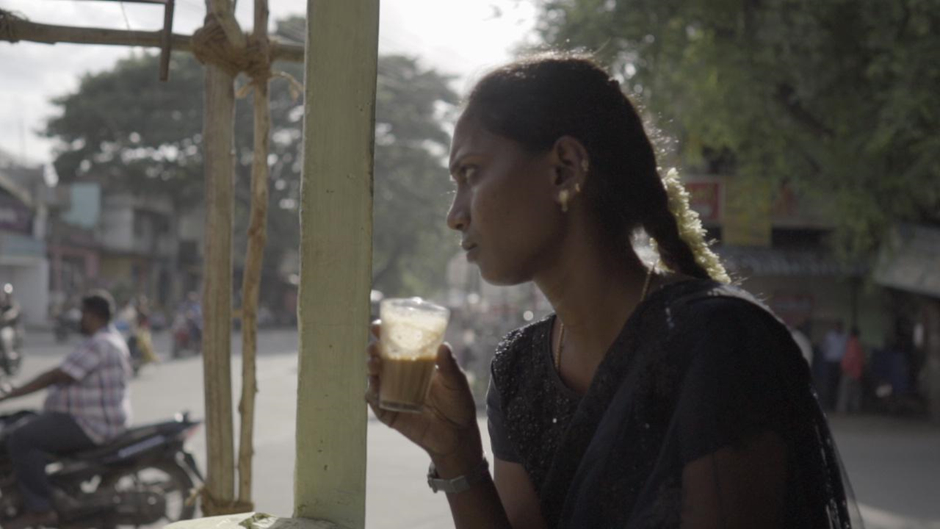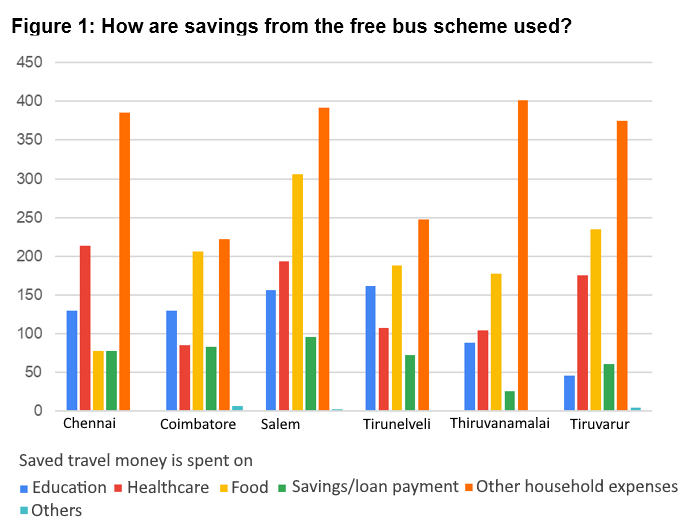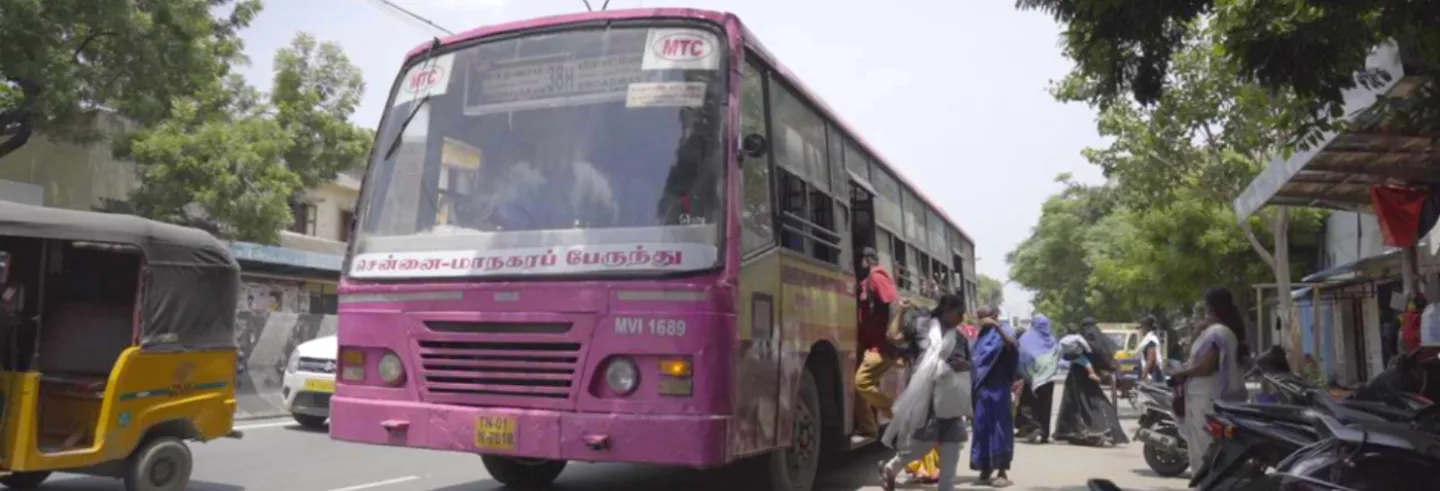In June 2023, Karnataka launched a scheme making public buses free for women to enable greater social inclusion. The reaction on X (formerly Twitter) was telling. A post by a woman holding up her free ticket attracted a lot of flak with people noting that she looked like she could afford to pay for public transport. The question of why men had to subsidise women’s travel was also raised by many.
While X may not be an accurate index of public sentiment, members of the Citizen consumer and civic Action Group (CAG) who spoke
Overview of Free Bus Schemes
Tamil Nadu’s free bus scheme for women was launched in mid 2021 to ensure the greater social inclusion of women. However, not all buses are free. Public buses have different service categories—ordinary (aka whiteboard), express, deluxe, and a/c Volvo—and the fares for each of these vary. Women can travel free only in ordinary buses. Tamil Nadu is the only state where such a restriction applies. In most cities and towns in the state, the ordinary buses are the largest part of the fleet (around 70% to 80%), barring Chennai, where they constitute less than 50% of the fleet.
Women in Tamil Nadu appreciate the scheme and its benefits are there to be seen… more women are stepping out for work and leisure; and women are saving money, which they are investing in their family’s future.
Karnataka began its free bus scheme for women in June 2023. It is valid across all categories of buses except a/c Volvo but is limited to women who can show proof of domicile. The government has announced it will issue Shakti cards to women whose domicile details are verified but women can now show any government-issued identification card to get zero value tickets on buses.
Delhi’s scheme is open to all women, with no proof of domicile required, while in Punjab, proof of domicile is a prerequisite. But neither of them restricts the scheme to specific bus categories—Delhi’s scheme is even valid on the airport shuttle bus.
In 2023, the Chennai-based CAG studied the Tamil Nadu model to gauge its impact on women’s mobility. The report titled "Fair Fares: Towards Gender-Inclusive Public Transport" is to be published shortly and will be available on the CAG website.
Promoting Social Inclusion
Research has shown that women’s mobility is restricted by social norms. It is assumed that the burden of domestic duties must be borne by women. Therefore, working outside the home may be acceptable as long as domestic duties are not neglected. In many families, concerns about safety are voiced (sometimes valid) to prevent women from working outside the house or stepping out at “odd hours”.
Women who do work outside the home often find access to safe, convenient, and affordable transport very difficult (see here). If the family owns a private vehicle, it is typically earmarked for the men of the house, with the woman’s need for it accorded a very low priority. This is assuming she has learnt to ride or drive.
Women who do not work outside the home also have mobility needs for domestic duties (shopping, children’s education, healthcare needs). They usually resort to walking or using public transport. With the poor quality of public transport, women tend to spend far more time than men in commuting. All this limits their participation in the labour workforce.

Two years after the scheme was introduced in Tamil Nadu, the CAG interviewed 3,000 women across six cities in the state, including Chennai, the capital city. The lack of access to private transport was reflected in the survey with just 339 women reporting that they sometimes used two-wheelers. The use of two-wheelers was lowest in Chennai and highest in Salem, followed by Coimbatore.
A common narrative in the media and among bus passengers is that the women are now being subsidised by hard-working males who not only have to earn for their families but also pay for the women through their taxes.
Of the interviewees, 341 women said that the scheme had not changed their travel patterns while 2,659 women said yes, it definitely had—they now used the free bus service more often than they used the paid service earlier. However, most of these women had been using public buses for several years. Only 204 women reported that they had begun using the public bus in the past year. While we cannot assess the impact of the scheme on women entering the workforce, it is clear that more women are using the free buses. This indicates that women are more mobile than they used to be, thus aiding their social inclusion.
For many of the women interviewed, the scheme was useful in that they did not have to think twice about taking a bus. In the past, they would have weighed their options—take the bus or walk to save the bus fare. Many of them also said that they had switched from taking share autos, autos, and two-wheelers to the public bus, making a case for promoting sustainable transport.
Investment in the Future
A common narrative in the media and among bus passengers is that the women are now being subsidised by hard-working males who not only have to earn for their families but also pay for the women through their taxes. This simplistic view does not consider where the money saved by women goes.
Of the 3,000 women interviewed, 2,000 said they saved more than Rs. 400 per month. Nearly 20% of the women reported saving between Rs. 400 and Rs. 600 and another 20% said they saved between Rs. 600 and Rs. 800 per month. This aligns with the savings reported by A Report on the Zero-Ticket Bus Travel Scheme for Women - I, a study by the Tamil Nadu State Planning Commission in June 2022 (a year into the scheme).
According to the women in the CAG’s study, the money saved was used largely for household needs (2,024 women),

It is often overlooked that transport planning in India does not factor in the needs of different user groups and is largely tailor-made for the average working man. Women typically take multiple short trips during the day as they fit in domestic duties along with work outside the house. The public transport fare structure in India penalises those who take short trips (more expensive). So the average man who commutes to work by bus or train pays less for the same distance than a woman who does it over multiple trips.
The frequency of the transit service also caters only to this male demographic with service being better during peak hours and very poor during off-peak hours. Women who work in the informal sector or have complex travel patterns spend a considerable amount of time waiting for the bus.
Women May Loiter
The CAG’s study sought to understand the purposes for which women were using the bus now that it was free. Almost one fourth (734) of the women interviewed said that the scheme allowed them the freedom to indulge in leisure activities such as visiting temples or spending time on the beach or in a park. We understood that because transport was an added cost, they would not have indulged in such activities before the free bus scheme.
A larger benefit of having more women stepping out, whether for work or leisure, is that it increases the visibility of half the population. Societal norms being such that loitering in public spaces is understood to be a privilege of men, it is rare to find women hanging around on the road or buying themselves a cup of tea from a roadside stall. Leisure activities contribute to the physical and mental well-being of all—men and women. A study on public parks in South Asia found that women from low-income households in Chennai frequented parks to get some “me time”, to socialise, to vent frustrations, and to allow their children to play in a safe place.
Crowded Buses, Poor Frequency
While the scheme in Tamil Nadu has been welcomed by women, they point out that the buses are now very crowded. The scheme is applicable only in ordinary buses that stop at all bus stops on the route. With the ordinary buses in Chennai being fewer in number than all the other categories combined, there is considerable crowding. In other cities, most of the buses are ordinary but fleet sizes are small, which also leads to crowding. Chennai has more than 750 routes served by 3,436 buses, of which 1,556 are ordinary buses. Longer routes mean the turnaround time for a bus is longer, leading to poor frequency.
Data to Improve Services
A major difficulty in evaluating the impact of the free bus scheme has been the lack of data on passenger usage. Bus corporations in the state do not collect gender-segregated data or data on travel patterns. As mentioned earlier, women travel differently than men but the lack of data has helped mask this.
Transport planning is done mainly for the average salaried man. To gather more data, at greater granularity, digital systems such as smart cards will be needed though traditional surveys will still gather valuable information. Digital systems can tell the service provider who is travelling, where, and when, and this can help optimise resource allocation—how many buses to deploy at different times and in different places.
Other than the complex logistics and investment required for such systems, the main drawback is that many citizens still prefer traditional paper tickets and cash payments because they are not comfortable with these new technologies. A 2022 study on passenger information systems in Chennai by the CAG, Navigating Unchartered Territories, found that less than one fourth of regular public transport users (bus and train) use apps to access information on service timings or to pay for tickets. This is despite 86% of them having a smartphone. Many poor and marginalised people are not electronically documented, and do not have the time or inclination to visit government offices to process paperwork for things such as smart cards.
…The one drawback to understanding the impact of the free bus scheme is the lack of gendered travel data.
Karnataka’s scheme, which calls for women to apply for smart Shakti cards, may be a means of garnering crucial information and it could perhaps morph into a National Common Mobility Card in the future. However, requiring paperwork penalises and excludes those who need the scheme the most. In that sense, Tamil Nadu’s scheme is open to all women. It requires no paperwork, is simple and easy to implement, and it reaches its core target group.
However, the one drawback to understanding the impact of the free bus scheme is the lack of gendered travel data. So the question that the state and service providers need to address is how to ensure easy accessibility while also gathering better data.
Ironing out Wrinkles
Tamil Nadu’s free scheme has been running successfully for two years. Women appreciate the scheme and its benefits are there to be seen—the number of women availing themselves of the scheme has grown three times in two years; more women are stepping out for work and leisure; and women are saving money, which they are investing in their family’s future.
No scheme or plan is perfect. There are the issues of crowding, hostile comments from male passengers, and poor frequency of buses. From a broader transport planning perspective, there is an abysmal lack of granular data on transport and travel patterns, especially in cities like Chennai, which have begun the process for developing their next master plans. One way to address crowding would be to make the scheme valid on other bus categories as well. The low bus frequency is a longstanding problem that can be solved with political will and new investment in public transport.
The free bus scheme could also benefit if the government could provide a better narrative around it so that the public understands why providing a fare concession to women is a win-win solution. Sensitising the transport provider’s staff to this would also be useful. Finally, it would be wise to continue investing in regular traditional surveys and studies while digital systems are gradually eased in.
Sumana Narayanan is a Senior Researcher at the Citizen consumer and civic Action Group (CAG), Chennai, working on sustainable mobility and road safety.









